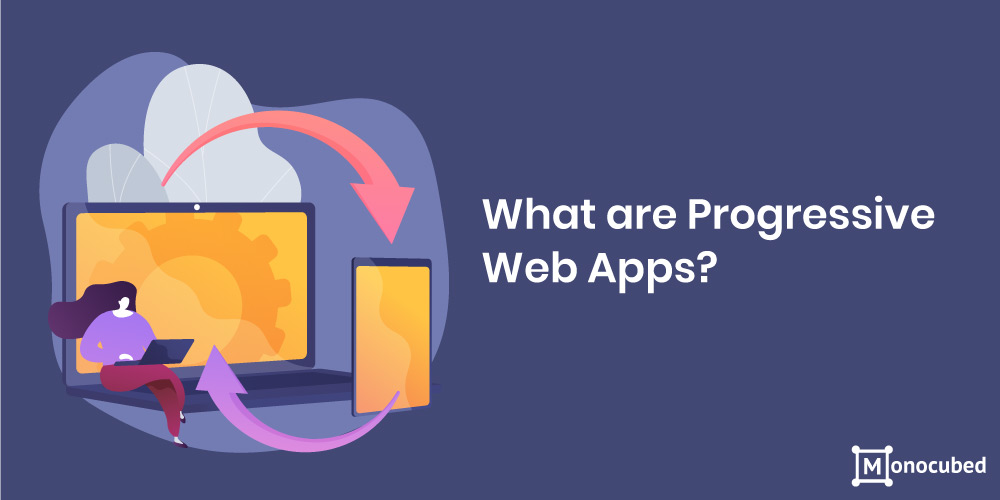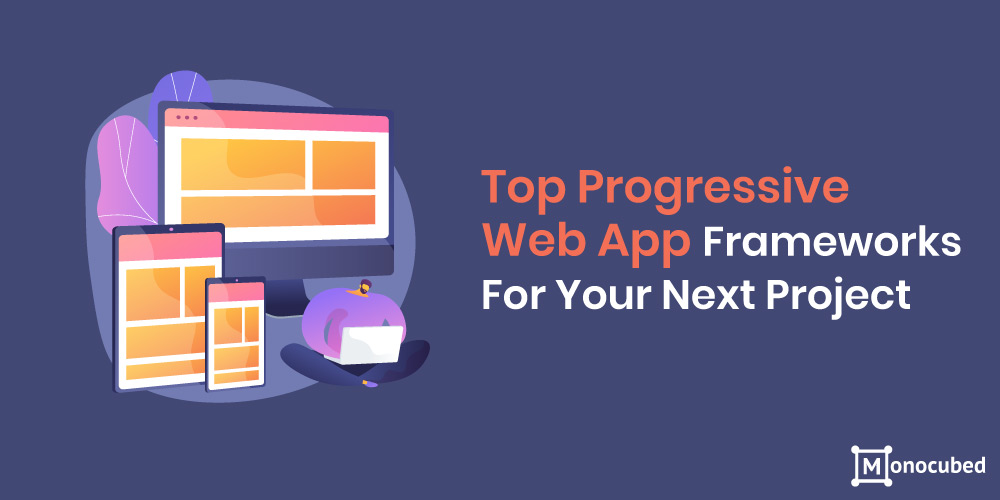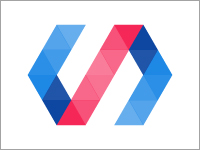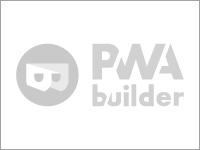- Interested to know why progressive web apps are so popular nowadays?
- Wondering which framework is best for developing progressive web apps?
To stay ahead in the market, companies have to adopt emerging technological trends quickly and efficiently. Amongst the latest technologies, smartphone technology has seen huge growth. One such technology that has taken over the mobile and web app development world is – progressive web app frameworks.
According to a Statista report, presently, there are 3.3 billion mobile phone consumers across the globe. This stats is estimated to reach around 3.8 billion in the upcoming years.
Some of the best Progressive web applications (PWAs) examples are Starbucks, Pinterest, and Twitter. These applications noticed a substantial upsurge in user-engagement levels when they substituted legacy native apps and mobile web experiences with PWAs. Let’s observe some of the most popular progressive web app frameworks.
Table of Content
What Are Progressive Web Apps?

A progressive web application is a kind of app software conveyed through the web, developed utilizing web technologies comprising CSS, JavaScript, and HTML. It is designed to function on platforms that employ a standards-compliant web browser, containing both mobile and desktop devices.
Progressive web app (PWA) presents the gap between native apps and user experience in web-based applications. Since PWA is a sort of website or webpage termed as a web app, they do not need distinct distribution or bundling. Specifically, there is no constraint for users or developers to set up the web applications through digital distribution schemes like Google Play or Apple App Store.
Nevertheless, for several PWA suppliers, the absence of visibility of PWA in such distribution schemes is a drawback when compared to native apps. To fluctuating degrees, the main application stores began to take PWAs, permitting them to be found in these stores.
Since the beginning of 2021, PWA-related characteristics are supported to varying degrees by the Apple Safari, Google Chrome, Microsoft Edge browsers, and Firefox for Android. Numerous companies highlight noteworthy improvements in an extensive range of key performance indicators after PWA execution, like augmented time expended on conversions, revenue, or page.
Features of a PWA
Progressive web applications are intended to run on any web browser that is acquiescent with the proper web standards. As with many cross-platform resolutions, the objective is to aid developers to develop cross-platform apps more effortlessly than they would with native applications. Below are some of the vital features of a PWA:
- Receptive It is suitable for any form factor – mobile, desktop, or tablet.
- Advanced It works well for all the users, irrespective of their browser choice, utilizing advanced enhancement ideologies.
- Independent connectivity The service workers permit on low-quality networks or offline usages.
- Rapid after preliminary loading After the preliminary loading gets completed, the same page elements and content do not need to be re-downloaded every time.
- Updated It is always kept up-to-date owing to its service worker update procedure.
- Application-like It feels like an application to the users with app-like navigation and interactions.
- Re-engagement factor It can implement push notifications to preserve engagement with the users.
- Safe It is served via HTTPS to avert interference and guarantee that the content has not been meddled with.
- Linkable It can be shared via a URL easily and does not entail any difficult installation.
- Easy to install It provides home screen icons without the usage of an app store.
Do You Have a Web App Idea?
If you develop a PWA, your web app will be fast, mobile-friendly and work even in low network areas.
Interested? We are too. Let’s talk and build an advanced progressive web app today.
Best Progressive Web App Frameworks For Your Next Project
The major and initial step in building Progressive Web Apps (PWA) is to choose which web development framework to employ. As there are numerous alternatives available, it is advisable to calculate the pros and cons of every PWA frameworks before selecting the most appropriate one.
Below-mentioned are some of the best progressive web apps frameworks:
-
React
In this Progressive web app (PWA) development domain, React is considered as a prominent framework owing to its ‘Create a new React app’ producer and all its creativities to create PWA the novel measure of the web.
React, being produced by Facebook and in 2013, is a JS library for the interface scheme. Presently, it is one of the leading libraries for front end web app development. It can be employed to make both single-page applications (SPA) and multi-page apps with the content vigorously loading and shifting within a distinct page.
This PWA framework is well-known among all the developers due to its exceedingly broad JavaScript library. It makes use of JSX to connect with HTML formats. You can exercise countless packages available to scale up any app and the project further.
Latest version 17.0.1
Pros- Wide-ranging ecosystem
- Has a large community
- Delivers easy scalability
- React offers great flexibility
- Has a reasonable learning curve
- Execution is swift with virtual DOM
- The same code can be utilized for web and native app
Cons- As compared to JS, React is rather complex
- It needs prior knowledge of JSX
- With no defined procedure, React implementation is complicated
- The more you choose for flexibility, the more concerns will emerge
-
Angular
Angular, established by Google in 2010, is one of the oldest and popular JavaScript frameworks. It is known to be the most advanced and ‘full-packed’ from the rest of the PWA frameworks available. After understanding its learning curve, it proves to be a great framework to employ. All Angular components are modular, that is compatible with other web frameowrks and tools. That is why as an Angular application development company, we prefer Angular as our frontend technology in most projects.
The entire building procedure with Angularjs is made easier, as it is created to save you the trouble of dealing with repetitive and monotonous tasks. PWAs that are formed implementing Angular get benefited from its exceptional compilation system, Ahead of Time (AOT), which permits quicker app rendering by transforming TypeScript and Angular HTML code into competent JavaScript code before the browsers download and run the application.
Latest version 11.1
Pros- Angular framework has multifaceted infrastructure that is appropriate for huge-sized projects
- Well explained methodology
- Exceptional archive of third-party extensions to select from
- An active and large community of web developers
- Dependency injection to upsurge modularity and code efficiency
- Completely modular components
- Augmented security and speed, with a brilliant and unique concept of AOT
Cons- It is relatively complex
- It is essential to learn Typescript before using Angular
-
Ionic
Ionic is a web framework for the hybrid web as well as mobile applications produced with CSS, JavaScript, and HTML. Since its beginning in 2013 and till recently, it was linked to and reliant on Angularjs elements. Without them, it was only suitable for rudimentary apps. Being an open-source framework, it has its foundation on Apache Cordova and Angular framework.
This best PWA framework has enormous library elements for both iOS and Android platforms. It facilitates app developers to build web pages that can be placed inside the web browser. WebView offers web pages in the device web browser to view native applications.
It has an extremely flexible technology stack and permits for applying challenging frameworks like Angular, Vue js, or React to create applications.
Latest version 5.3.4
Pros- Decreases the software development cost as it is open source
- Has a shorter learning curve
- Easy maintenance utilizing inbuilt browser instruments and debugging tools
- Great for hybrid web development
- A large community of active users
- Huge library of plugins for retrieving APIs without any requirement for coding
Cons- Recurrent updates need an alteration in the existing app to state the latest variations
-
Vue
Similar to React, Vue has several similarities, as both of the PWA frameworks utilize Virtual DOM for an efficient and light-weight representation of the real DOM. Vue improves and embraces the prevailing web technologies like CSS and HTML, while React has a more advanced way where it uses JavaScript primarily.
Owing to this, front end beginners might find more time to learn and build PWA in Vue js, subsequently forming the learning curve more forgiving for the newcomers. This PWA framework has succeeded to make the code easy by supplying two critical things – simplistic coding and high-speed rendering.
Latest version: 3.0.5
Pros- Easy for new web developers to learn it as it has simple coding
- Giant companies like Alibaba and Laravel support Vue
- Good documentation
- Possess similar notions like React and Angular
- Improved rendering performance due to Virtual DOM
- Can be merged with Typescript and JSX to generate the best output
Cons- The flexibility in its construction sometimes illustrates the trouble
- It needs a major amount of conversion in legacy code from Angular 1.5
- Has a small support team
Want to Develop a Mobile-friendly Web App?
Start developing a mobile-friendly web application with us. We have skilled Vue developers experienced in developing PWAs.
-
Polymer
Polymer, an open-source, has been built by Google. It has an extensive variety of web components, templates, and development tools. This proves to be an outstanding choice for building PWA since the procedure becomes extremely simplified.
Furthermore, the components and tools within the app framework are usually supported on a huge diversity of browsers. In this manner, the app you make implementing Polymer is much accessible and adaptable. The vital fact that it utilizes pure CSS, JavaScript, or HTML makes it an autonomous PWA framework.
Latest version 3.3.0
Pros- Complete web app stack support, comprising routing, responsive, and data tier layouts
- A huge base of components, containing components that run across different browsers
- Simple to understand API
- Browser embedded building tools confirm no requirement for distinct debugging tools
- Exceptional documentation
Cons- No authorized IDE
- Lack of server-side rendering that results in low SEO-friendliness, increased HTTP requests, and high reloading time
-
PWABuilder
PWA Builder, an open-source and community-led framework was founded by Microsoft. It supports both Android and iOS application development. It delivers one of the fastest ways to develop elements for a PWA that runs across the devices and platforms.
This framework is created to be the finest at what it does, which is transforming sites into functional, engaging, and fast PWAs across all the manifold platforms. It aims to form cross-platform PWAs, comprising the availability in spaces like Mac and Microsoft Store. It also has extended its authorized support to WebKit-powered web browsers.
Latest version 2.0.3
Pros- The comprehensive and intuitive building process
- Wide-ranging documentation
- Supported by devoted Microsoft team
- Can use Vue for its app development
Cons- An automated procedure that can make handling things harder
Frequently Asked Questions
Which browsers support progressive web apps (PWA)?
The chief application stores began to embrace progressive web apps, permitting them to be discovered in app stores. From 2021, PWA-related traits are reinforced to fluctuating degrees by Apple Safari, Google Chrome, Microsoft Edge, and Firefox for Android browsers.
Is progressive web apps the future?
A progressive web app is certainly considered the future of multi-platform app development because of its application on several devices, the improved speed, and the ease that requires no installation or updates. It is available on both Android and iOS and makes PWA an app of the future.
Which are the popular progressive web app frameworks in 2025?
React, Polymer, Angular, Vue, PWABuilder, and Ionic are some of the popular progressive web app frameworks in 2025 that provide heaps of tools and resources to leverage, eradicating the requirement to write a huge portion of code physically.
Conclusion
Progressive web app framework selection is the critical and chief step for a PWA project. There are numerous determinant aspects to consider before making an appropriate choice. Contact Monocubed for creating a PWA that will be scalable, responsive, user-friendly, and robust.
These days, websites are being moved to HTTP which makes it much easier to introduce a PWA in a controlled and secure environment. As every framework has its capability, its complexity, size, presence of media or interactive components, and expected scalability play an important role in choosing the solution.
 By Yuvrajsinh Vaghela
By Yuvrajsinh Vaghela









